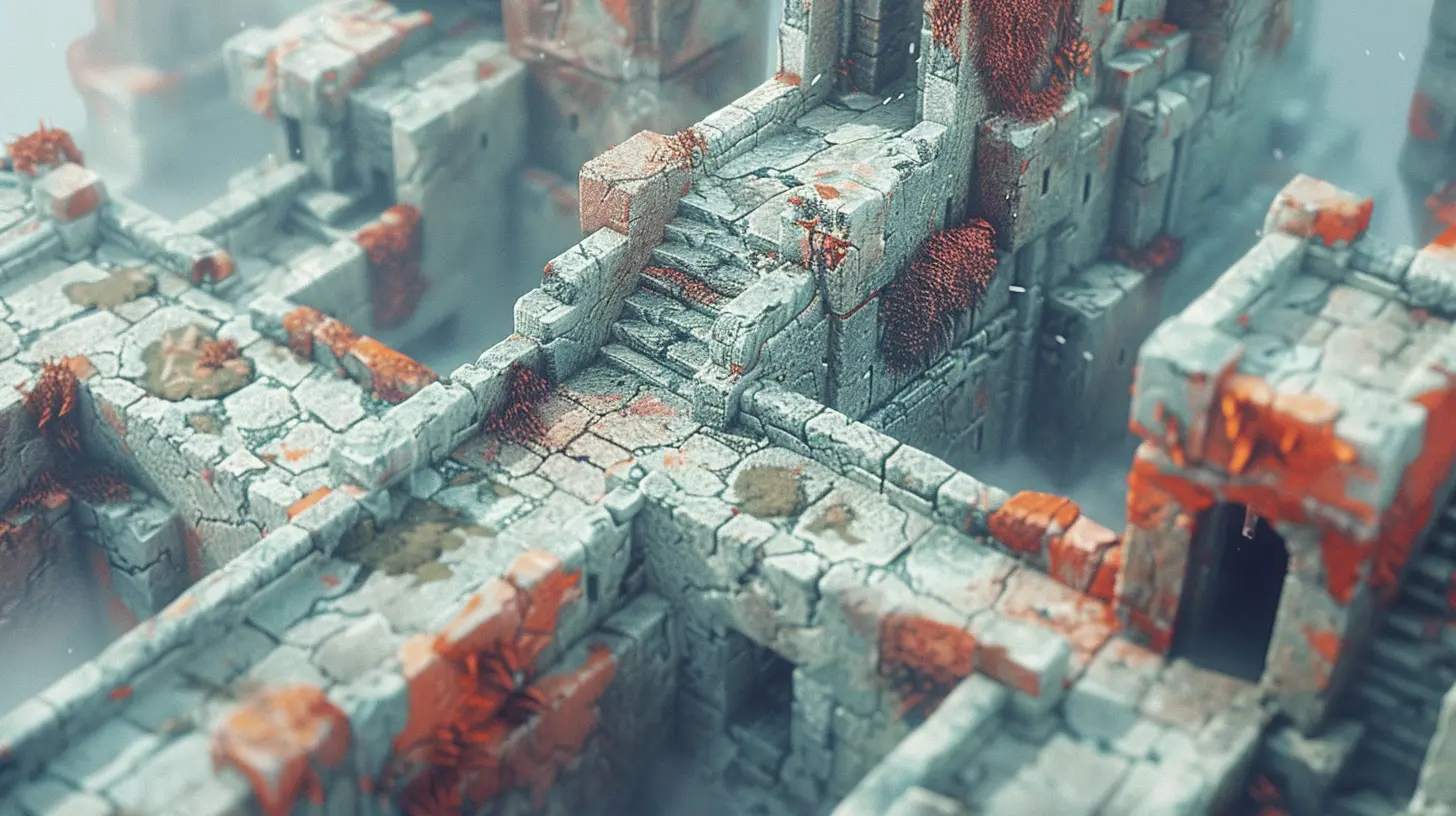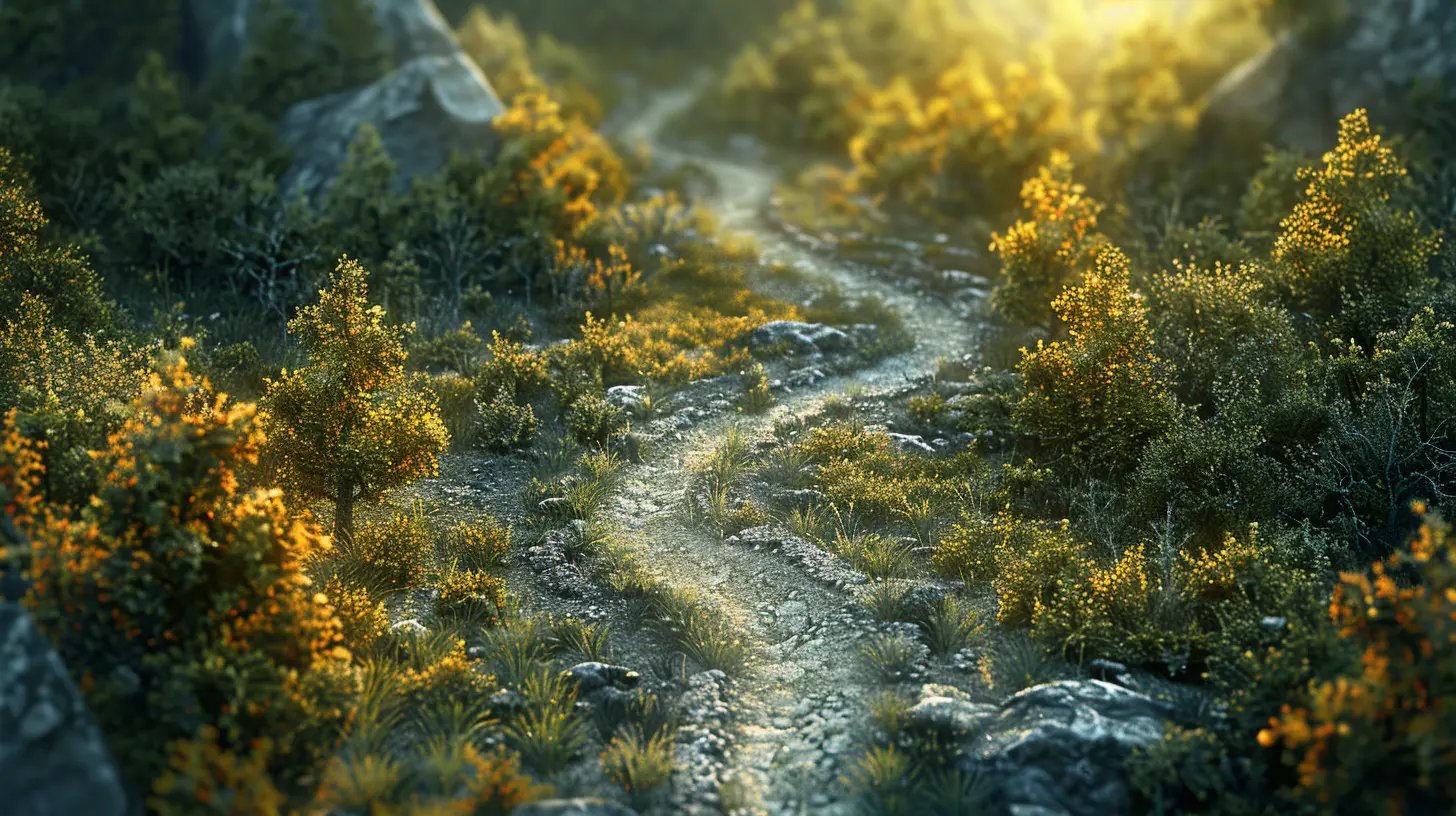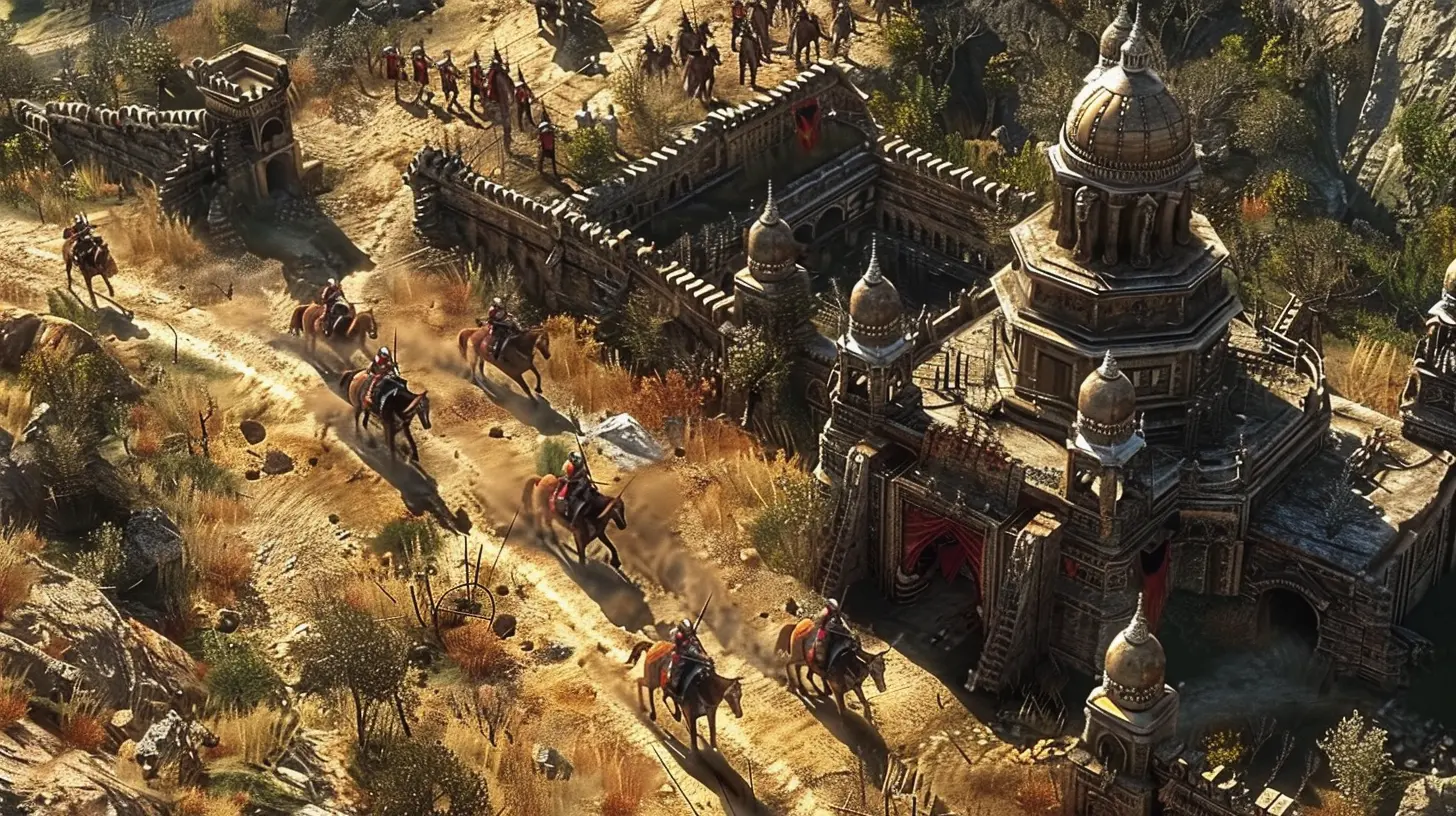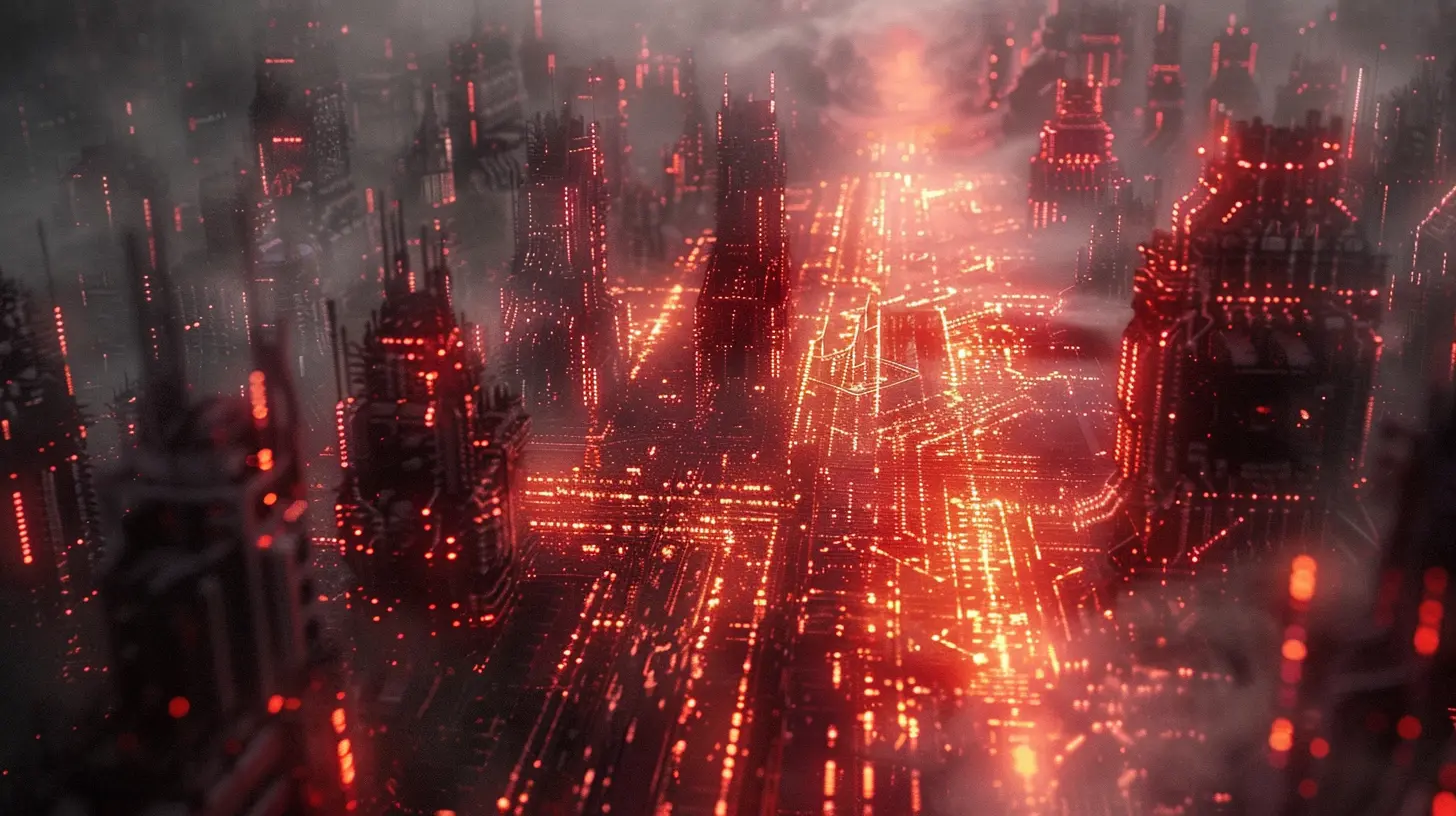The Science Behind Unit Pathfinding in RTS Games
15 May 2025
Real-Time Strategy (RTS) games—ah, the satisfying click of issuing a command to your army, watching them scatter like ants, only to regroup and carry out your tactical brilliance. Yet, have you ever wondered what wizardry makes those tiny soldiers, tanks, or drones maneuver so effortlessly across the battlefield? Why don’t they stumble into walls, get stuck in tight corners, or have a traffic jam when moving to a single point?
Believe it or not, it's not black magic (though it might feel like it) but intricate algorithms driving the illusion of seamless motion. At the heart of it all lies unit pathfinding—a fascinating blend of math, logic, and computational art. So grab your favorite beverage, sit back, and let’s dissect the science that turns mere pixels into an army marching at your command.
What Is Pathfinding, Anyway?
Okay, let’s start with the basics. Pathfinding is essentially the process of finding a viable route from Point A to Point B. Simple, right? Well, not so fast. Imagine you're at a concert, trying to leave the venue amidst a sea of humans. You can’t just walk in a straight line to the exit. There are obstacles (other people, chairs, barriers) that you need to dodge. RTS games face the same kind of chaos—only instead of concertgoers, you’ve got units trying to navigate terrain, enemies, and even each other.Pathfinding is what enables a unit to navigate these challenges without looking like they’ve had one too many bad lines of code. But making this look realistic, efficient, and fair while running on your gaming rig? That’s where it gets tricky.
The Algorithm Behind the Magic
At the core of unit pathfinding in RTS games is a well-known algorithm called A* (A-Star). Think of it as the brain of pathfinding. It's like Google Maps for game units—but instead of traffic and construction zones, it deals with impassable terrain, choke points, and other units.How A Works
Without getting too technical, A works by breaking the map into a grid or nodes (think of it like graph paper). Each node represents a potential step on the unit’s path. The algorithm calculates two things for each node:1. The cost to get to that node (G) - This is basically the distance from the starting point.
2. The estimated cost to get to the end (H) - Think of this as a "guess" based on the bird's-eye view.
A combines these two values (G + H) to choose the best* node to move to next. It does this over and over until the unit reaches its destination.
But hey, it’s not perfect. The more units you add, the harder your computer works to calculate all those paths. This is why you sometimes see units bump into each other like they’re playing bumper cars—poor little A* is under stress.
The Challenge: Crowds, Terrain, and Choke Points
Now, let’s talk wrinkles, because nothing in game development is ever as simple as it looks. In an RTS game, units don’t operate in isolation. They’re not lone wolves but part of a pack. And packs? They have drama.Avoiding Traffic Jams
Remember how I mentioned units can get stuck in tight spots? That’s because A* doesn’t naturally account for other units when calculating paths. Developers often slap on extra layers of logic, like collision avoidance systems or flocking behaviors, to keep units from tripping over each other.Imagine a group of geese flying south in a V-formation. Each goose follows general rules—keep a certain distance, don’t crash into the one in front, and stay on course. Game developers use similar techniques (like Boid algorithms) to guide units within a group.
Choke Points and Narrow Passages
Choke points—like narrow bridges or small doorways—are the bane of any RTS player’s existence. For the game, this requires special attention. Developers often introduce mechanisms like flow fields or navigation meshes (NavMeshes) to help. These are pre-calculated zones of movement that tell units where they can and can’t go, creating smoother transitions in tight spaces.
Advanced Techniques in Pathfinding
While A* is the MVP of RTS pathfinding, modern games often use more advanced techniques to give units that extra polish. Why? Because gamers (that's us) have high standards. Nobody wants to babysit their units because they’re too dumb to walk around a rock.NavMeshes: The Flexible Floor Plan
Most modern RTS games rely on Navigation Meshes, or NavMeshes for short. Instead of dividing the map into a rigid grid, NavMeshes divide it into freeform polygons. Think of it like sketching out all the "walkable" areas of a map with a highlighter.NavMeshes are efficient because they eliminate unnecessary checks for impassable terrain. Plus, they allow units to cut corners—literally—creating more natural movement compared to grid-based systems.
Flow Fields: Go With the Flow
Another exciting innovation is flow fields, often used in large-scale battles involving hordes of units (looking at you, StarCraft II). Flow fields work like invisible winds that gently nudge units in the direction they need to go. Rather than calculating individual paths for every single unit, the flow field provides a broader guide, drastically improving performance.Think of it like how schools of fish move as one. They’re not individually deliberating, “Do I turn left or right?” They’re following the current together, creating that mesmerizing collective motion.
The Human Element: Balancing Realism and Fun
Pathfinding isn’t just about getting units from Point A to Point B. It's about creating an experience that's both fun and believable. And here’s where the human touch comes in.Game developers are constantly tweaking pathfinding systems to strike the right balance between realism and player satisfaction. Why? Because perfect realism doesn’t always translate to a fun game. Do you really want your units to take 10 minutes to navigate around a hill because it’s "realistic"? Nah, you’d rage-quit before the first skirmish.
Developers might intentionally fudge the rules—adding shortcuts or simplifying mechanics—so the game feels snappy and responsive. At the end of the day, it’s not about how "smart" the units are but how smart they feel to you as a player.
Why Pathfinding Matters to Gameplay
Let’s not forget why all this effort goes into making units move smoothly in the first place. Pathfinding is a cornerstone of what makes RTS games enjoyable. When done right, it’s invisible—you never think about it because it just works. But when it’s bad? Oh, boy. You’ll notice.Strategic Depth
Good pathfinding allows for deeper strategy. You can focus on your tactics—flanking enemies, defending choke points, or launching surprise attacks—without constantly babysitting your units to make sure they don’t derp out.Immersion
Pathfinding is a subtle but crucial part of immersion. Units that maneuver naturally make the game world feel alive. Poor pathfinding, on the other hand, breaks the spell, reminding you that you’re just playing a game with flawed AI.The Future of Pathfinding
So, where is the science of pathfinding headed? As hardware gets faster and game worlds grow more complex, we’re seeing the rise of techniques like machine learning and real-time adaptive AI. Imagine units learning how to navigate better based on your playstyle or dynamically adjusting to unexpected obstacles on the fly. It’s exciting stuff!Additionally, multiplayer games are driving innovations in synchronization, ensuring that thousands of units on different systems stay in lockstep without desyncing. The more ambitious the game, the sharper the tricks developers need to pull off.
Wrapping It Up
And there you have it, my dear gamer friend—the brainy science behind why your RTS units move the way they do. From A* algorithms to NavMeshes and flow fields, pathfinding is an intricate dance of logic and creativity. The next time you send a battalion marching across the map, spare a thought for the countless hours of code and testing that went into making it seamless.Whether you’re a casual RTS player or a hardcore strategist, understanding the science of pathfinding gives you some pretty cool bragging rights. So go forth, click those units, and command with confidence—because now, you know the secret sauce behind their smooth moves.
all images in this post were generated using AI tools
Category:
Real Time StrategyAuthor:

Emery Larsen
Discussion
rate this article
4 comments
Rowan Wagner
This article provides a fascinating glimpse into the algorithms driving unit pathfinding in RTS games. Understanding these mechanics not only enhances gameplay but also highlights the complexity of game design.
May 22, 2025 at 2:31 PM

Emery Larsen
Thank you! I'm glad you found the article insightful. Understanding these algorithms truly adds depth to both gameplay and game design.
Nell Edwards
Insightful exploration of complex AI navigation methods.
May 18, 2025 at 2:37 AM

Emery Larsen
Thank you! I'm glad you found the exploration insightful.
Celeste Porter
This article provides a fascinating exploration of unit pathfinding algorithms in RTS games, highlighting techniques like A* and Dijkstra's algorithm. Understanding these systems not only enhances gameplay but also showcases the intricate balance between strategy and technology in game design.
May 16, 2025 at 5:16 PM

Emery Larsen
Thank you! I'm glad you found the exploration of unit pathfinding algorithms intriguing. It's amazing how these techniques shape both gameplay and the strategic depth of RTS games.
Anastasia Watson
Ah, the mystical art of unit pathfinding—where tiny soldiers magically navigate obstacles like they've got GPS in their helmets. Who knew AI could be so advanced... or so hilariously incompetent?
May 16, 2025 at 3:40 AM

Emery Larsen
Thank you for your comment! It's true—unit pathfinding blends impressive AI with occasional comedic missteps. It’s a fascinating challenge that keeps evolving!



